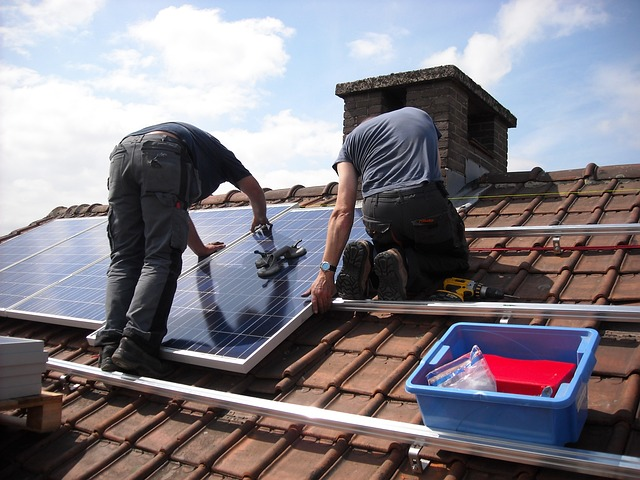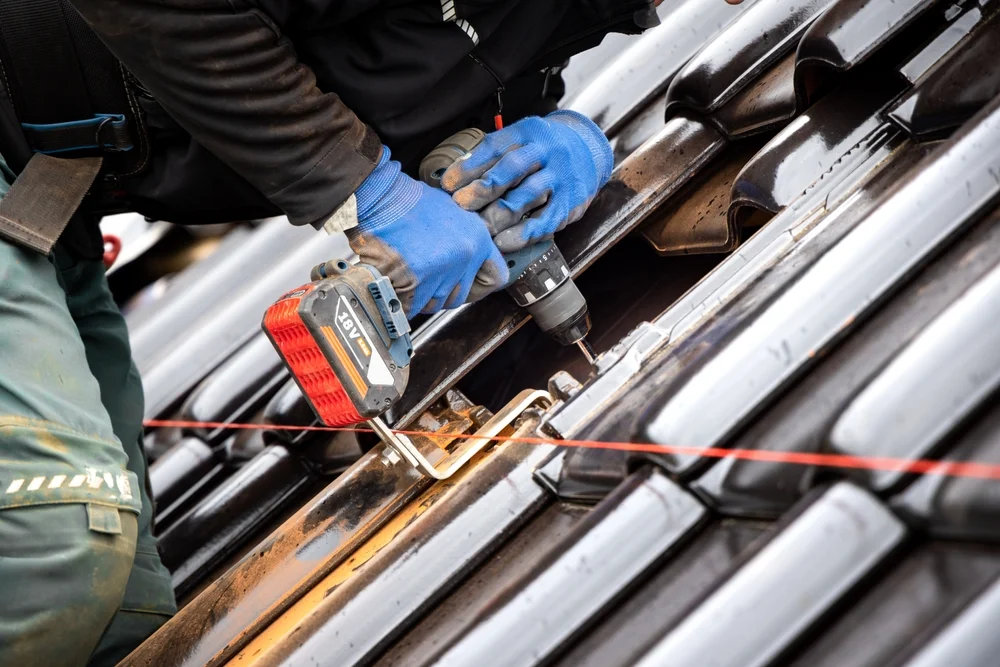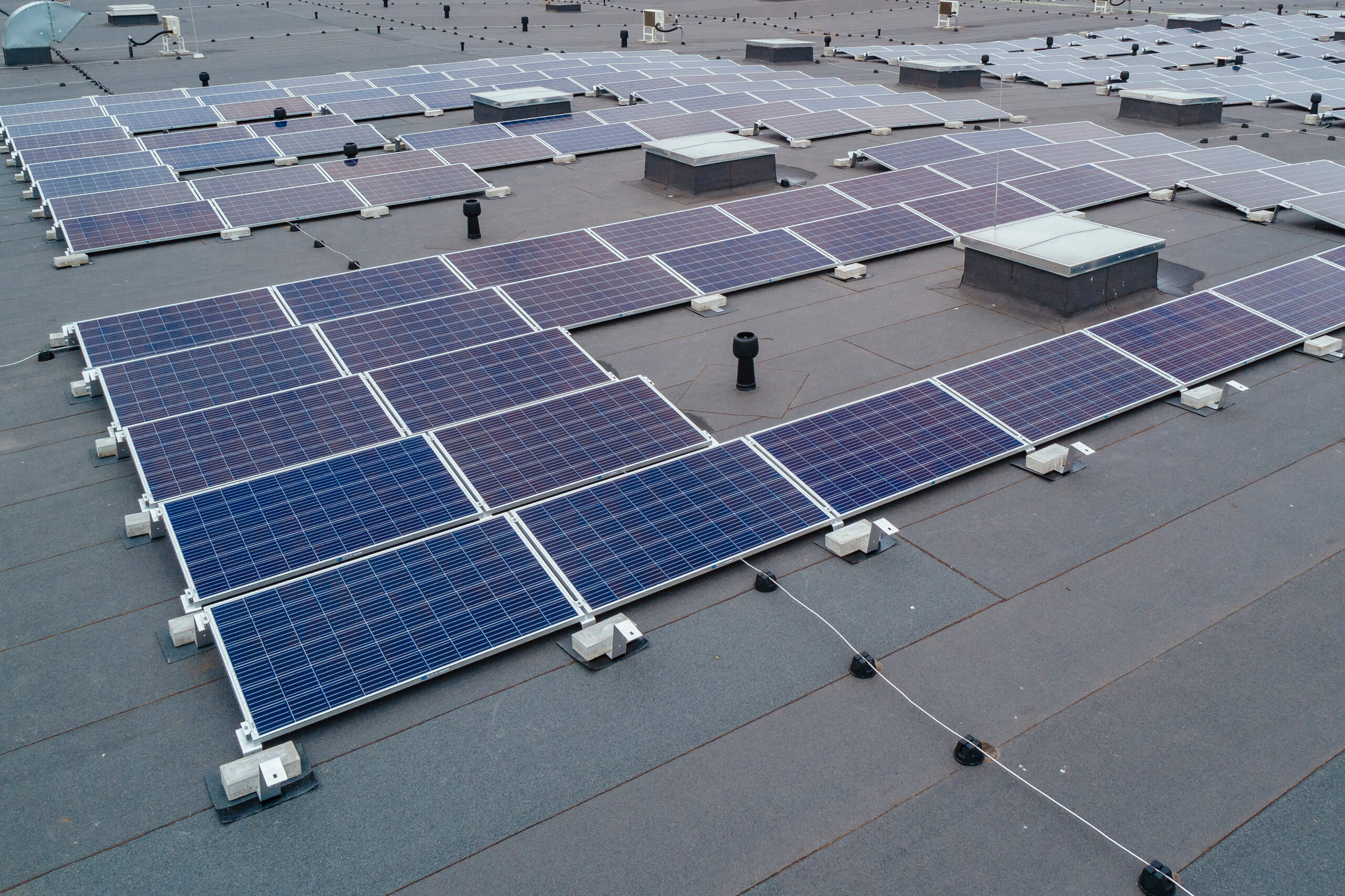Table of Contents
- 1
- 2
- 3
- 4
- 5
- 6
- 7
- 8
Solar Panel Mounting Systems
The mounting system is not something that is mentioned frequently when discussing home solar panels.
However, a good mounting system, well installed, is essential for ensuring that your solar panels stay in place for the next several decades.
Here we will discuss different types of mounting systems, when they are used, and how they affect solar PV systems.

What is a solar panel mounting system?
A solar panel mounting system refers to any mechanical system that is meant to fix solar panels in place. They can also be used to determine the angle and orientation of the solar panels.
A mounting system may contain some or all of the following elements:
Metal Rails: These fix directly onto the rear of the solar panel and attach it to the rest of the mounting system.
Brackets: For fixing a mounting system to any roof, as well as connecting the rails to the foundation of the mounting system.
Frames: Flat roof or ground-mounted solar panels will need some sort of frame to provide them with a firm base, as well as providing an angle of inclination.
Who might need a solar mounting system?
A mounting system is needed for any home or business with solar panels, or larger solar farm. The mounting system is the skeleton of the solar panel array, and may serve two purposes.
Keeping Solar Panels Secure:
The mounting system keeps the solar panels fixed in place and stops them from being blown over by the wind. This is necessary as solar panels are typically in exposed places such as rooftops or open fields.
Properly Angling Solar Panels:
Solar panels need to be put at the proper angle to best absorb the sunlight. This is achieved either by the pitch of the roof they are attached to or by angling the mounting system.
The solar panel brackets may achieve one or both of these goals depending on where they are affixed.
Solar Panels on a Pitched Roof
This covers the vast majority of home solar panels, which are affixed to pitched roofs with either tiles or slates. These are affixed with a hook and rail bracket. This avoids drilling into the roof tiles themselves, but affixes the mounts to the rafters.
There are only slight differences between how roof tiles and slates have solar panel brackets attached to them. This is due to the fact that slates are more fragile than ceramic tiles.

Roof Tiles
- 1Tiles are lifted up to expose the rafter of the roof beneath, and a bracket is screwed directly onto the rafter.
- 2The tiles are then let down with the hook end of the bracket resting on top.
- 3Specialised rails are then attached to the hooks along the length of the roof.
- 4The solar panels are then affixed to the multiple rows of rails to provide a firm mounting system.
Roof Slates
- 1Slates are removed to expose the rafter beneath, and brackets are screwed directly onto the rafter.
- 2A thin film of metal or plastic called a ‘flashing’ is attached to the wooden battens of the roof to maintain a watertight seal.
- 3The installer will carefully cut the tiles to provide space for the mounting bracket to fit through and replace the tiles.
- 4Rails are then attached to the ends of the brackets that are now protruding from the roof.
- 5Solar panels are then affixed to the rails to create a well-mounted solar array.
Pitched roofs provide an angle of inclination naturally. So, the solar panel mounting system puts the panels parallel to the roof rather than angling them further.
Solar Panels on a Flat Roof
With flat roofs, the mounting system for solar panels has to provide elevation and also protect them from the wind.
When solar panels are on a flat roof, care must be taken to ensure that the solar panels are not putting each other in shade.
The vast majority of flat roofs will use ballast frames for mounting solar panels. These are small tilt frames which are held in place by weights.

Ballast Mounting Systems
Roof Mounting: Ballast systems are free-standing, held in place by weights but not otherwise fixed to the roof.
Attachment: The frame of the ballast system consists of legs and brackets with perdicular rails to which solar panels are attached.
Angling: Solar panels are typically angled at 10° – 15°. This enables them to catch the sun while also avoiding issues from shading and wind.
Direction: On a flat roof, solar panels can be placed facing any direction. South-facing is ideal in Ireland.
Ground-Mounted Solar Panels
Ground-Mounted solar panels face a number of challenges that roof mounted panels don’t. The mounting systems must be able to meet these difficulties.
- Foundation: Without a roof to anchor onto, the mounting system must provide a firm base and foundation for the solar panels.
- Direction: On open ground, the mounting system will also determine the direction which solar panels are facing.
- Angling: Ground mounted panels can be angled as the installer pleases for the best results.
Mounting systems for ground-mounted solar panels are usually much larger units than for roof based systems, able to mount multiple solar panels on a single frame.
Also, a gap is usually left between the individual units of ground-mounting systems. This ensures access and stops the panels from completely blocking sunlight from the ground.
There are two ways to mount solar panels on the ground: using a tilt frame or a pole-mount system.
Tilt Frames
Elevation: Two rows of legs, with the front legs shorter than the back legs to create a tilt.
Attachment: Rails perpendicular to the legs of the frame, to which solar panels are attached.
Orientation: The solar panels can be attached in a portrait or a landscape layout, depending on the setup of the system.
Angle: In many such frames, the angle of elevation can be adjusted by changing the height of the legs.
Pole Mounting
- Elevation: A single pole or column, which can be of adjustable height, provides the base of the system.
- Attachment: A large bracket is affixed to the top of the pole. Rails run perpendicular to the bracket for the solar panels to be attached.
- Orientation: Solar panels on a pole mounting system are usually attached in a landscape orientation.
- Angle: The connection between the pole mount and bracket allows for the angle of the panels to be adjusted.
- Direction: Pole mounting systems allow for the direction of the solar panels to be adjusted. Some high-tech options are motorised to track the sun throughout the day.
How to choose the right solar mounting system
The right type of solar mounting system will largely depend on where they are being installed. Your roof type and roofing material will play the largest part for Irish homeowners in determining this.
This is something that should be discussed with your installer before proceeding with the installation. You will want to know what you are getting and how it will affect your property before the work begins.
How much does a solar mounting system cost?
The costs for solar panel mounting systems will vary greatly depending on the type of system and the number of solar panels being installed.
Small items, such as individual brackets for roof mounts, might only cost €5 – 10 each, while an individual pole mount for ground-mounted solar panels could cost in the region of €900. That is excluding any labour costs.
For home solar panels, the cost of the mounting system will be included in the overall quote for your installation.
Any good solar panel installer should provide an itemised breakdown of the bill for your solar PV system, including materials and installation costs.
Read more about the process for Solar Panel Installation.
Frequently Asked Questions
Solar panels in Ireland should face south if possible. This will allow them to catch the greatest amount of sunlight.
Solar panels should ideally have an angle of inclination of 30° – 45° to best receive sunlight straight on.
All roof types will require a solar mounting system for the panels to be attached to.
Get Free Solar Quotes Today
Find a local recommended solar panel installer in your area, and get your free quote today. It’s 100% cost and commitment free.


